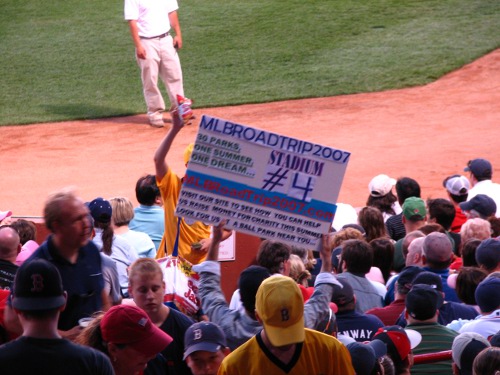
Editor’s note: This is a guest post from Alon Mass. He is a 4th year medical student at New York University School of Medicine, and is currently applying for a residency position in the field of Urology. Alon is an avid photographer, loves to bicycle in NYC, and even holds the world record for Fastest Backwards Game of Labyrinth.
While a student at Cornell University, Alon spent the summer after his junior year touring the country with his childhood friend. By visiting 30 MLB stadiums and 22 national parks in 81 days, Alon was able to help raise over $6,000 for the Make-A-Wish Foundation, American Cancer Association and Harlem RBI. Here’s how he did it.
Logistically speaking, arranging a trip to consecutively watch a game at all 30 Major League Baseball stadiums in one summer is pretty tough. But, adding 22 National Parks, raising over $6,000 for charity, securing free tickets from over half of the teams, arranging interviews with television shows, radio talk shows, and newspapers–and still allowing time for trying out various “Man vs. Food†eateries, harder still. Taking over 9,000 photographs and writing over 50 blog entries–pretty damn time consuming. This wasn’t just a little trip that we planned overnight; this took months of organizing, hours and hours of number crunching and phone calls, and many tough decisions.
But, hey, if you’re going to do it…do it right, right?
In this article, I will help all of you dreamers out there make your vision a reality. Yes, I was once in your shoes, a high school kid with lofty goals. “Hey dude, let’s go on a MLB road trip!†That’s probably how it started. But, most people stop at that point. My friend Neal and I, well, we went all out.
Neal and I went to different colleges, but both managed to keep the entire summer of 2007 free from other obligations. We had already planned out a mock road trip schedule for the four past seasons and had a pretty good idea of how to tackle the country once the 2007 MLB schedule was released.
And so, with extensive and meticulous planning, my friend and I drove 20,500 miles over 81 days, and took score during 30 Major League Baseball games–missing not ONE pitch, at every MLB stadium in North America.
Intimidated? Acceptable.
Want to do it yourself? Read on, I’ll let you in on the secrets…
Who to Go With
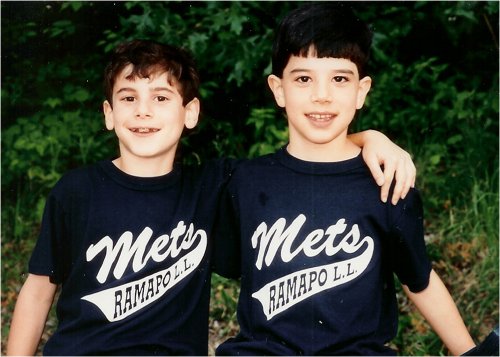
My recommendation? Go with a childhood friend. Someone who shares your passion for baseball and adventure. Someone who you will not run out of things to talk about with. Someone who understands you as a person, who compliments you and brings things to the table. You don’t want to be doing all of the work, all of the driving, making all of the decisions, calling all of the baseball teams. You need someone who you can trust, who will be the one to get up at 8 AM and say “Dude, let’s get a move on, we have an 8 hour drive ahead of us today.†Someone who will pull the car out while you’re paying at the pizza place. Someone who will accurately log all of the shared costs of gas, food, hotels, tickets, and beers.

Alon and Neal
Keep this in mind: you will be on the road, in the car, next to the same guy, for over SIXTEEN [16] days! That’s right, if you add up the driving time between destinations, Neal and I were in the car for exactly 16.33 days. That means, your friend will know the ins and outs about your personal life by the end of the trip. So, pick someone who you feel comfortable discussing your sex life, family issues, childhood fears, and more. So, I’m serious about this–first and foremost–pick a good partner in crime.
Don’t get me wrong, there were times when we had tensions build, but ultimately our friendship and history (I’ve known him since I was 4 years old, and we grew up together) won the day.
Go Slow
Listen, you can do this thing in just about 50 days (people have done it, and I have read their accounts). But, why rush? This trip is not just about accomplishing one goal–30 MLB parks–it’s about seeing America the Beautiful, about experiencing all that our wonderful country has to offer. Neal and I spent 81 days on the road–that’s a full summer college vacation. School ended, I was on the road a week later–and was back to school a week after it ended.
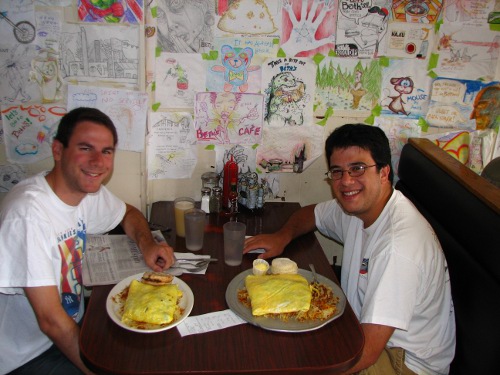
Eating a 12 egg omlet in Beth’s Cafe, a “man vs. food” location in Seattle, WA.
Why skimp on time? There is SO much to see. Relax a bit, put your feet up and enjoy the view from Crater Lake, a rain-water-filled crater that formed as the result of a blown out volcano, in central Oregon. Slow down, use your brain, and build a speedster Lego car in the famous Mall of America–and then challenge your friend to a race on the Lego ramp. Meet up with some college buddies and get to know their hometown friends. Take a two-day detour and drive through Vegas (again) just to win $100 on craps and get your favorite sushi roll at Nobu in the Hard Rock casino. Say “OK!†to one of those bizarre signs you see on the highway, like the “Famous Corn Palace!†in rural South Dakota.
Plan a Fool-Proof Schedule
Two words: Rain Out. What would happen if you only allotted one possible day to see the Royals play at Kauffman Stadium, and the game was rained out? Kansas City is like 5 hours away from any other baseball city. You can’t get back there from Texas, you can’t get back there from Colorado. You’re totally screwed. You saw 29 out of 30 teams and you failed. Game over. You need to make sure that when planning your route, you can have AT LEAST some flexibility. Spend 5 days in Chicago (trust me–there is a lot to do) and make sure that you hit both home stands (usually, two teams in the same home city will not be home at the same time, i.e. the Cubs will be on the road when the White Sox are in town). If you need to kill some time, take a day trip to the hallowed Field of Dreams, just a 4 hour drive from the Windy City, take a hike up to Lambeau Field, and make sure to stop at the Mars Cheese Castle on the way for some unbelievable sausage and cheese. Spend a day exploring Chicago; take the elevator to the top of the John Hancock Building, get a deep dish pizza, and see your reflection in the Bean.

Also, make sure that you customize your schedule to optimize your opportunities. For example, we made sure to be in San Francisco for the 2007 MLB All-Star Game. While we didn’t go to the game itself, we used our kayaks [See Section: Stay Sane in the Car] to join the party in McCovey Cove, the unofficial name of a section of San Francisco Bay beyond the right field wall of AT&T Park, where home runs often landed when Barry Bonds played for the Giants. It was crazy out there, and we were so happy that we were able to be a part of it.
Prepare for Each Game

We had a strict routine at every ballpark. First, before we got there, we would read about the stadiums (surrounding bars, history of the ballpark, fun and interesting games and amenities within the parks, famous statues, etc…). I highly recommend this book: The Ultimate Baseball Road-Trip: A Fan’s Guide to Major League Stadiums by Joshua Pahigian and Kevin O’Connell. Because we had done our homework, when we got to the stadiums we were prepared and knew what to expect and how to find the best bars, stadium food, and other points of interest. We knew to look out for certain fun traditions, like how Bernie Brewer (the mascot for the Brewers) slides down a beer mug-type slide after any of the Brew-Crew hits a Home run. We knew to go to the Cubby Bear bar before our game at Wrigley Field in Chicago. We knew to get some garlic fries in San Francisco’s AT&T park. We knew to get a sandwich from Primanti Bros. before our game in Pittsburgh. We knew to make the trip around Minute Maid Park in Houston, to get a close look of Tal’s Hill in center field. We knew to not really look out for anything special at all in Oakland’s McAfee Coliseum.
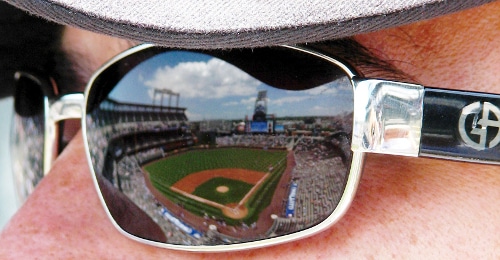
Neal’s sunglasses reflecting Coors Field, Denver, CO
Also, when we got to the stadiums, we made sure we had about a full hour before game time, so we could check out every corner, every angle and every smell that the fields had to offer. In all 30 stadiums, we made a trip to the upper deck, right behind home plate, and took a panorama-type picture of the entire stadium. In all 30 stadiums, we took a picture of the two of us behind home plate, to prove that we were there.
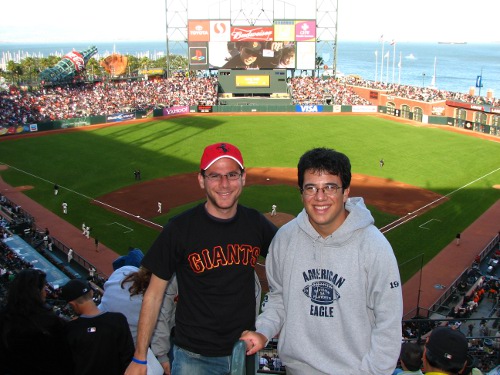
“Home Plate pic” in SF’s AT&T Park
Then, we would go to the team store and get a bumper sticker, or something of the sort. In the end, we had a collection of 30 items from all 30 stadiums. Next we would get a program, team pencil, and score sheet. We would go to our seats (and more often then not, move up to better seats), and sit down and enjoy the game. We would use the team pencil to take score on the team score sheet, and literally did not miss one pitch (between the two of us) all summer long. So, if Neal had to go pee, I took score. If I went to go get a brat (beer-soaked sausage in the Midwest), Neal took score.
Create a System to Rate Stadiums

Neal and I wanted to find a way to determine which stadium, overall, we thought was the “best.” But we realized that there were so many different aspects of our experience that we needed to account for, so we decided to create a rating system. We rated the following categories (see below table) from 1-100 (100 being the best) for each stadium, and then averaged all of it together. We also gave bonus points for things like “post-game fireworks show” (2.5 points), or “team gave us tickets for free†(+2.5 points), or “interviewed on the field during the pregame show†(+5.0 points). You get the idea–just be creative about it, and it will be a lot of fun.
Our ratings categories were the following (and examples from each):
| Category | AT&T Park | Yankee Stadium |
| Food | 93 | 81 |
| Field | 92 | 95 |
| Scoreboard | 89 | 42 |
| Fans | 94 | 99 |
| Surrounding Area | 93 | 83 |
| Architecture | 98 | 89 |
| In-game Entertainment | 87 | 72 |
| TOTAL | 92.3 | 80.1 |
By the way, AT&T Park in San Francisco was my favorite stadium.
Obviously our ratings were subjective, but it allowed us to organize our thoughts and provided us with a lot of fun in the car after the games. Also, it gave us an opportunity to compare stadiums and debate, using tangible numbers, which ones we thought were the best and the worst. Overall, I would say that stadium ratings are a necessary part of the trip.
Contact Teams Months in Advance
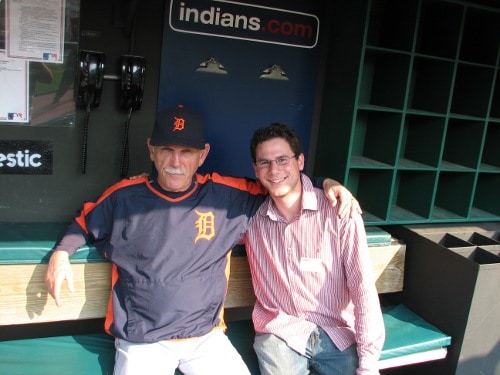
Alon with manager Jim Leyland.
Originally, we decided to contact the teams to see if they could help us raise money for our charity project. Ultimately, due to various legal issues and the fact that all of the teams already had official causes that they supported, they were not able to help us. But, then a few teams, without us asking first, offered us free tickets. I gladly accepted. And then, I made sure to call, re-call, and re-re-call all 30 teams to see if we could get free tickets.
In the end, 15 teams gave us free tickets, and this was really great because 1) it saved us money, and 2) we got to sit in really good seats! We got to sit in the luxury skybox in Baltimore and Houston, sat behind home plate in Los Angeles and Texas, and had pretty good seats in the other stadiums that provided us with free tickets.
Second, we asked teams if they could give us an inside tour of the stadium. Many teams agreed, and really went above-and-beyond to accommodate us. For example, in Philadelphia, we got to meet the famous radio announcer Harry Kalas and hold the 1980 World Series Championship Ring. In Cleveland, we got an inside tour of the stadium as well. In San Diego, we were greeted by a very friendly team representative, were given a gift package, and were escorted to the field during batting practice, where we were interviewed on the field by the Fox News Channel affiliate. We even got to meet Ricky Henderson!
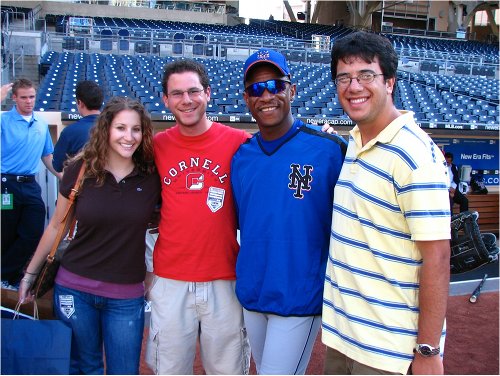
Meeting The Man of Steal, Ricky Henderson.
In Boston, we met a Red Sox representative 2 hours before the gates opened to the general public and were given a tour of the stadium. Then, we were interviewed on the field and in seats, and the footage from this was used for a 10-minute clip in a television show called “Red Sox Stories†that aired on a local Boston TV channel. (Yes, I wore my Yankees hat during the TV interview.)
All of these perks were a direct result of the hard work I put in before our trip–I literally spent tens of hours calling team representatives, and did not give up when I was turned away the first or second time.
How to Contact Teams
Go to the official team website, and under the “roster†section, go to “Front Office.” Usually, there will be a phone number here. All teams have a Community Relations or Public Relations department. For example, looking at the Pittsburgh Pirates website, you can find the team telephone number on the top of the website (Tel: (412) 321-BUCS), and then find names of the people you want to call (Vice President, Community & Public Affairs, Patty Paytas …OR… Director, Community Relations, Michelle Mejia). You get the point. Sometimes, you can google their names and find their e-mail addresses. The more forms of communication you use to contact them, the less chance of them ignoring you or “forgetting to call you back.”
So, be bold, pick up the phone, and ask the secretary to connect you to that specific person. Half of the time, you will get a voicemail message, but sometimes, they will pick up. Then, just introduce yourself, explain what you are doing, and directly ask if there is anything the team can offer you to 1) offset your costs or 2) give you a special experience when you are at their ballpark. You would be surprised, as I was, to find that most of these people are very accommodating.
Charity
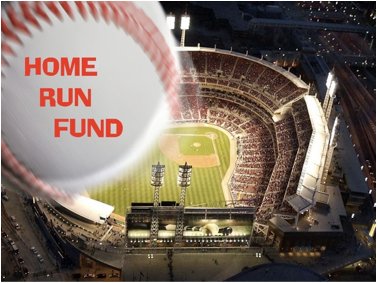
Months before we embarked on our trip, I came up with an idea to form a charity. It was a very simple idea but nonetheless took a lot of work. First of all, Neal and I decided that we would raise money for 3 organizations: The Make-A-Wish Foundation, The American Cancer Society, and Harlem RBI (Reviving Baseball in Inner Cities). I dubbed my charity “The Home Run Fund,†and the title related to how we would collect money. We contacted family, friends, teachers, and acquaintances and also brought a sign to all of the games we attended (I would stand up and hold the sign between innings, advertising for our charity). We asked people to donate a specific dollar amount, and then at the end of the trip, they would multiple that amount by the number of home runs we saw during the 30 games. For example, my uncle agreed to give $3 towards Harlem RBI. Since we saw 66 total home runs during our road trip, at the end of the summer, he gave us a check made out to Harlem RBI for the amount of $3 x 66 = $198. We then delivered the checks to the organizations. Ultimately, we raised over $6,000, and I am very proud of our accomplishment. This was our slogan: “While We Are Living Our Dream, Help Us Help Others Fulfill Their Dreams.”
 Ultimately, this is not something that you have to do – planning and going on the road trip is a lot of work as it is. But, if you have the time and will, I highly recommend that you develop this type of side project.
Ultimately, this is not something that you have to do – planning and going on the road trip is a lot of work as it is. But, if you have the time and will, I highly recommend that you develop this type of side project.
Make It All About Sports
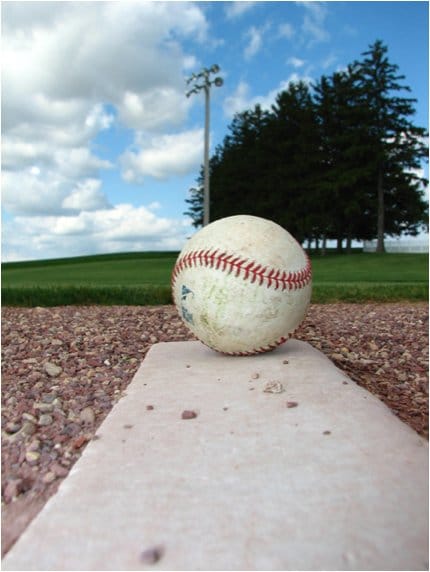
The Field of Dreams
The road trip, as I alluded to before, was surely about seeing baseball games. But as avid sports fans, there were some stops that Neal and I couldn’t pass up. First of all, we went to many other baseball related venues: The Baseball Hall of Fame (we called in advance, explained what we were doing, and were treated to a spectacularly fascinating behind-the-scenes tour; i.e., we got to see the counter check that sold Babe Ruth to the Yankees); the Field of Dreams (I can say without hesitation that this was my favorite day of the trip. The weather was perfect, the surrounding atmosphere was so beautiful, and you could tell that you were at a special place. Neal and I had a catch on the field and ran the bases. It was well worth the 4 hour trip, one way, from Chicago); the Louisville Slugger Factory (This is a cool place–you get to see the process from raw material to bat. Neal and I both bought our dads a customized bat with an engraving for Father’s Day).
We also hit up other famous sports venues: Lambeau Field (Luckily, I had a friend who lived close by, and she was nice enough to make us lunch that day, so the drive from Milwaukee was well worth it. Getting a tour of the ultimate football stadium was really fun); Churchill Downs (I love horse racing; in fact, I often go to the Preakness Stakes and Belmont Stakes, but I never had a chance to get to Churchill Downs. This place is a mecca of horseracing lore, and it was just a perfect way to spend an afternoon); Pauley Pavilion (The venue of the UCLA Bruins basketball team); The Los Angeles Lakers practice facility (We had met a guy who went on a road trip a few years before us, and he happened to be an employee for the Lakers. He was nice enough to show us around the Lakers practice facility, and also show us their championship trophies, it was great!).
You get the point. Seek out places that interest you–this will likely be one of the only opportunities to visit places like this in your life, so plan ahead.
See America
Since we took it slow, we had a lot of time to explore America. Actually, we made sure that any downtime we had in-between games was well planned. For example, we went to Disney World, Universal Studios in Los Angeles, toured Bourbon Street in New Orleans, toured San Francisco, spent a few days with friends in Texas, and more.
Most importantly, we were able to visit 22 National Parks across the USA and Canada. Besides baseball, our experiences in these pristine and beautiful gems scattered throughout North America were absolutely the most meaningful and interesting. In my opinion, most National Parks are must-see parts of any trip across our country. I cannot begin to describe in words, or pictorially, just how spectacular these places are.
Below are two of my favorite scenes.

First, Lake Moraine, which is found in Banff, British Columbia, Canada, about an hour west of Calgary. This lake is a unique and pure turquoise color and derives its beauty from glacial runoff. The mud from the glaciers in northern Canada seeps into the lakes and gives it that surreal color. Surrounded by this lake are ten dramatic peaks.
This next picture is a panorama picture I took (in fact, it is 13 pictures stitched together) of the Delicate Arch in Arches National Park, which is located in eastern Utah.

The park is home to hundreds of arches, structures that were carved out naturally by the wind, with the Delicate Arch itself being the most recognizable due to its sheer grandeur. Taking a two-hour hike to this natural monument was a surreal experience, and also good exercise. Actually, going to National Parks was good for our health in general–hiking for hours in each park countered the fattening stadium food and lack of exercise that we would sustain due to hours of driving in the car.
Where to Stay

We had a pretty tight budget for the trip–in all, we spent about $5,500 each. One way that we were able to save money was by staying with many friends, camping, and finding cheap motels. Of the 81 nights, we spent about 40 in friends’ houses (we were lucky, as we both had friends from college scattered all over the country). But, we also were not bashful about inviting ourselves over either. When embarking on such a trip, you have to be willing to be outgoing–and this certainly includes asking people for a bed or couch to crash on, even if you don’t know them too well. We also bought this cool tent, the brand was Quechua, that literally built itself when you threw it in the air. So, we’d stop at these KOA campgrounds (which, by the way, are all over the country, and about $15 a night, and have showers, electricity, etc.), threw our tent in the air, and we were good to go. In the morning, we would literally fold the tent up in a few minutes, toss it in the car, and be on the road. Otherwise, we wouldn’t spend more than $60 on a motel, and this happened only a few times. You probably don’t need to pre-book any hotel rooms or campgrounds. Furthermore, you never will know exactly where you will be during any given night. For example, when driving from San Diego to Bryce National Park, we had no idea when we would get tired and would want to crash for the night. So, we would program our GPS when we got tired, to see where the nearest highway motel or KOA campground was, and then just go to that one. So, in short, be forceful with friends, be flexible and be frugal!
Stay Sane in the Car
As I mentioned before, we were in the car for a total of 16.3 days. As you can imagine, it was tough to stay sane at times. At night, we would often take turns sleeping. To stay awake, the driver would listen to the radio (talk radio is more engaging, and helps you stay awake).

During the day, we rarely had a strict schedule to keep, unless we were driving to make a baseball game. This allowed us to explore the random corners of America. One piece of advice that I HIGHLY recommend is to each buy an inflatable kayak, which is really convenient in terms of: 1) not taking up a lot of space in the car (size of a small suitcase), and 2) being readily available since all you have to do is inflate it (with the help of an electric pump that can be plugged into the car). So, whenever we noticed that we were near a large lake, we would drive down to a dock, inflate our kayaks and go for a relaxing kayaking session. It was great–we kayaked on some really beautiful lakes, got a good bicep/tricep workout, and were able to split up the day of driving with a nice and easy activity.
Another game that we would play in the car was “Twenty Questions.” We met so many weird, funny, random and memorable people (we called them “charactersâ€) on the trip, and we would love to talk about them and remember them. We would play a game in which one person would think of a specific “character†and then the other would ask yes/no questions about the person, until they finally got the answer. Also, we started a fun game called the “Hall of Fame,†where basically, if a “character†was brought up in a game for the second time, we would give one of those slow claps, and then induct that character into the HoF. So, by the end of the trip, we had a starting line-up, based on our trip’s characters, and this gave us a great way to remember and chronicle these people.
In addition to recalling the day’s events, we used the car time for phone calls (to teams, media, friends and family), blog writing (we wrote a blog entry every day, on our website mlbroadtrip2007.com), and also tallied our mileage driven and money spent. We kept a 3-ring binder, and wrote down every single purchase that we each made (to the penny) and also kept track of how much money I owed Neal or vice-versa. We also had a section where we wrote down every stop we made, what time that leg of the trip started and stopped, and who drove. This allowed us to keep a running statistic of how many miles each of us drove, what our average miles-per-hours was, and the name of each place we stopped at. For example “Start: Gas station in Cheyenne, Wyoming, time -1:42 PM, driver: Neal. Stop: KOA Campground, Jackson Hole, Wyoming, time – 7:05 PM, 406.7 miles.†We also had this large Road Atlas of America, and we would mark down each road we drove on with black sharpie marker, so that in the end of the trip, we could correlate our book to the map, to see exactly where we had been.
Most importantly, make sure that you have a reliable power source in the car that fits the normal 3-pronged plug that a computer would need. This way, you can use your computer and other electronics in the car.
Conclusion

The summer, as a whole, was the most memorable time of my life. I love traveling, and chronicling my travels, and reminiscing about fun times, and taking photos, and seeing new and interesting things, and meeting weird and different people. I love baseball. I love nature. I love food. I love putting my all into the things I do, and I hope you do too, especially if you choose to go on a Major League Baseball Road Trip around the United States of America and Canada.
Please feel free to e-mail me at [email protected], and I would be more than happy to answer any questions that still remain unanswered, or just share memories of my trip with you. Thanks for reading!


